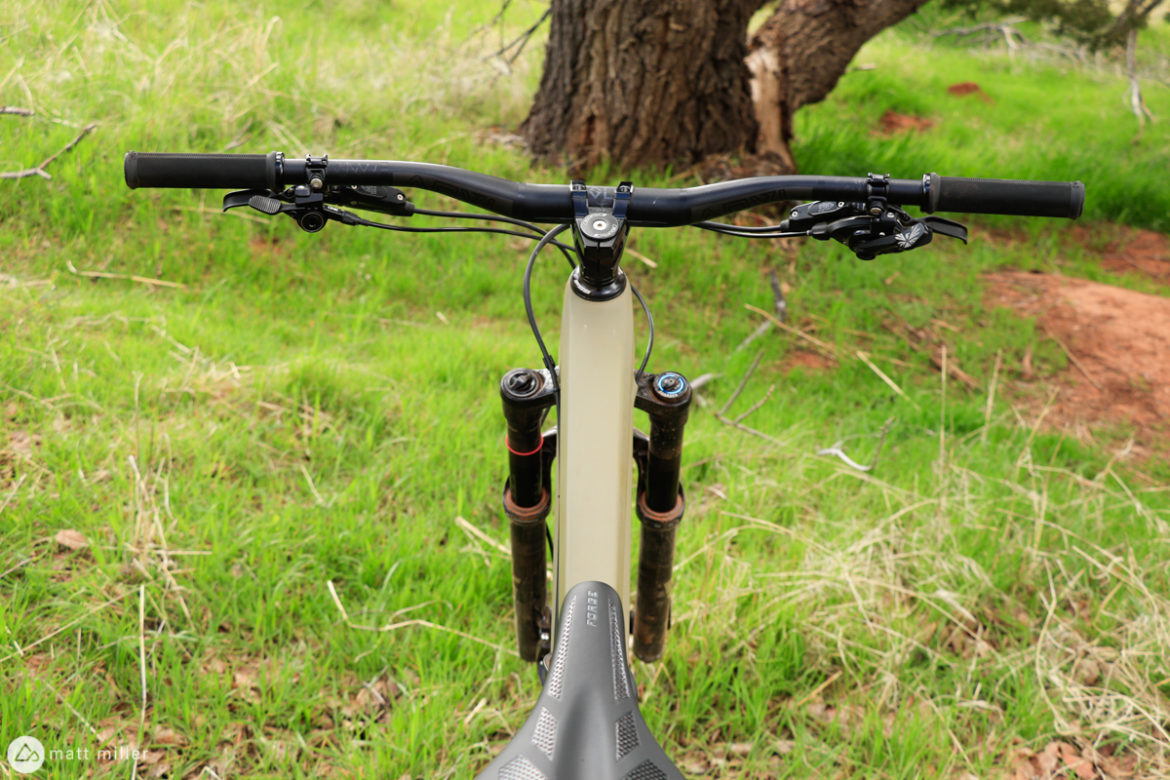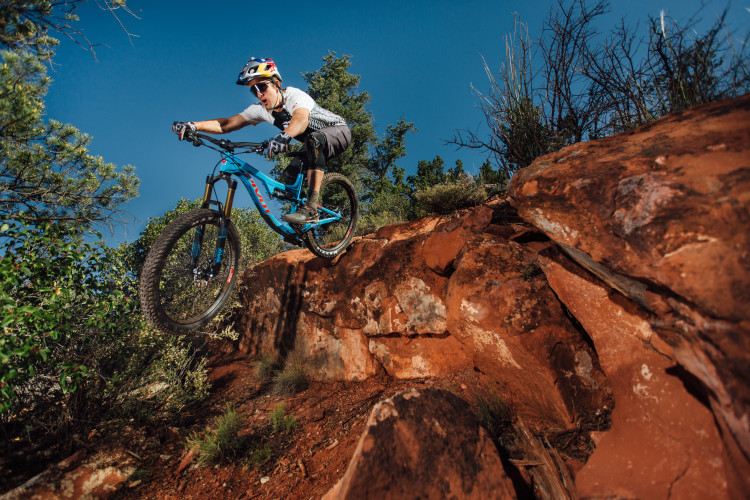
A month ago I wrote a piece titled ‘The Plus-Tire Trend Died Quickly, and 29ers are Continuing to Push 27.5 Out of the Picture.’ From the title, it’s probably easy to understand what the article is about. However, the title alone does not encompass the full story.
After speaking with numerous folks in the industry, from bike shop owners, to tire and bike manufacturers, it seems that after many trials, 29ers have become the predominant wheel of choice for mountain bikers and the mountain bike industry. But, 29ers are not a one-size-fits-all solution, and although a lot of people have warmed up to the bigger wheel size, there is still plenty to be excited about when it comes to 27.5. Enter Exhibit A with the 2020 Transition Scout.
Before heading to the Sedona Mountain Bike Festival, I planned out a few demos with brand reps for a couple of first-ride reviews on some very exciting 2020 bikes, including the Ibis Ripmo, the Pivot Switchblade, and lastly the Transition Scout. I have to say even though I was stoked to check out the Ripmo and Switchblade, I was most excited to try the smaller-wheeled, wild-mannered Scout.
About the Scout

The Scout has been in the Transition lineup for years, and the newest model is the third generation of the 27.5-inch bike. Starting in 2014, the Scout had 125mm of rear travel, and a 140mm fork. The 2014 Scout had a Horst link suspension layout and geometry was progressive for its time. In 2017, Transition re-did the bike, bumping up the travel to 130mm/150mm in the rear and front, and again pushed the boundaries on geometry. Reach was at 450mm on a medium, and 75.5° and 65° for the seat and head tube angles were certainly progressive for a few years ago on a 130mm trail bike. For 2020, the rear travel was of course bumped up again to 140mm, and it maintains a 150mm fork.
Transition has had some magic with its Speed Balanced Geometry and GiddyUp Horst Link suspension package, so it was safe to assume that wouldn’t change on the new Scout. Rather, it kicks up the progression. The new Scout moves to a full carbon frame, both front and rear triangle. The last version was only available in aluminum.

Looking through the geo charts on the Scout, it’s evident that all of the angles were examined and accounted for when it comes to rebuilding this modern mountain bike. The short and stubby seat tube (390mm, size M) makes for a low standover height and maximum seat post insertion. Sizes XS through XL come with 120, 150, and 180mm travel dropper posts and the large and XL both come with a 210mm travel dropper, all from OneUp.
The seat tube has been pulled up to 77.2° on a size medium, steepening by a half-degree on each smaller size, and slackening by a half-degree on each larger size.
A few years ago most of us thought “holy bananas,” when we read about 64° head tube angles on bikes that weren’t intended strictly for downhill use, but it feels pretty de rigeuer on the new 140mm Scout. Transition of course makes use of a 37mm offset fork. Reach only grew by 10mm on all sizes, but the wheelbase increased by about an inch.
With the GiddyUp suspension, Transition tuned the anti-squat and tried to balance the progressive leverage curve with a more linear rate of change through its travel, and gave it a usable sag range from 25-35%, so that riders can make the Scout feel more poppy or planted.

The Scout is also as maintenance friendly as can be with a threaded bottom bracket, easy-to-use cable routing, and bearing shields to prevent water contamination.
Pricing won’t be as friendly as before since it has moved to carbon. Framesets start at $3,200, and completes start at $4,500 for a SRAM NX build.
Ride impressions

The folks at Transition helped me dial in the Scout and we set the sag at a tight 25%. From there, I pedaled out to the Mescal Mountain trails from the Sedona Mountain Bike Festival venue with a group of friends. As soon I put the Scout’s tires on dirt, I knew it wanted to play, and I abided. With every turn, I’d flick my hips into the corner as hard as I could to get the rear end to carve, and no rock or root was safe from being popped off.
The Scout I rode had the SRAM GX build with a two-position RockShox Super Deluxe Ultimate rear shock, so I left it open during my entire ride. With 25% sag and the shock in open mode, there is a firm pedaling position with minimal bob and plenty of reaction to changes in the trail.

The seated climbing position on the Scout feels steep, and shortens the feeling of the 460mm reach by putting the rider into the cockpit. On the sustained climbs around Mescal Mountain, it was easy to get into a groove on the Scout and chug away, and the little party bike felt like an extremely capable climber, although it was evident it wasn’t the fastest up the hill. Two of my friends on 29ers tailed closely behind, and had I cared about my wheel size that day, maybe it would have gotten to me.
But, clocking distance was the last thing on my mind when I was on the Scout. Personally, I think this bike is well suited to all-mountain missions, but if you really care about getting to the top first, maybe consider the Smuggler. I was happy to spin to win all the way up to the trail intersection.
While I would have thought that the longer reach, wheel base, and rear travel would have taken away from the Scout’s playfulness, they add an element of stability to the short rear center which makes the bike easy to throw around. Around corners, the Transition Scout begs to pushed into the ground, like a toy car, being wound up and released across the linoleum kitchen floor.

One thing I had not predicted is how much more I had to squat to get the dropper post out of my way. With over seven inches of dropper travel, on top of tired legs, my legs felt like noodles every time I pushed the saddle down with my butt before a descent. I suppose that’s the price we pay for more hip movement and clearance.
But, the low, aggressively poised dimensions on the Scout gave me the feeling that I could attack and pick up speed on long descents, and as soon as I wanted to turn anything into a kicker or a jump, it was also ready.
Closing thoughts

The mountain bike world is full of great 29ers right now that climb, cut, and jump with the greatest, but there is something special about the Scout. Personally, I believe it’s one of the more exciting bike launches I have seen in a little while and it’s refreshing to see smaller wheels on a smaller travel package, as more brands are reserving 27.5 wheels for 160mm of travel and above. Geometry and suspension performance enable the Scout to take on long and technical climbs with minimal pain. For anyone that likes to add a little freeride attitude to their trail outings, there aren’t many other bikes that come to mind.





















1 Comments
Mar 28, 2020